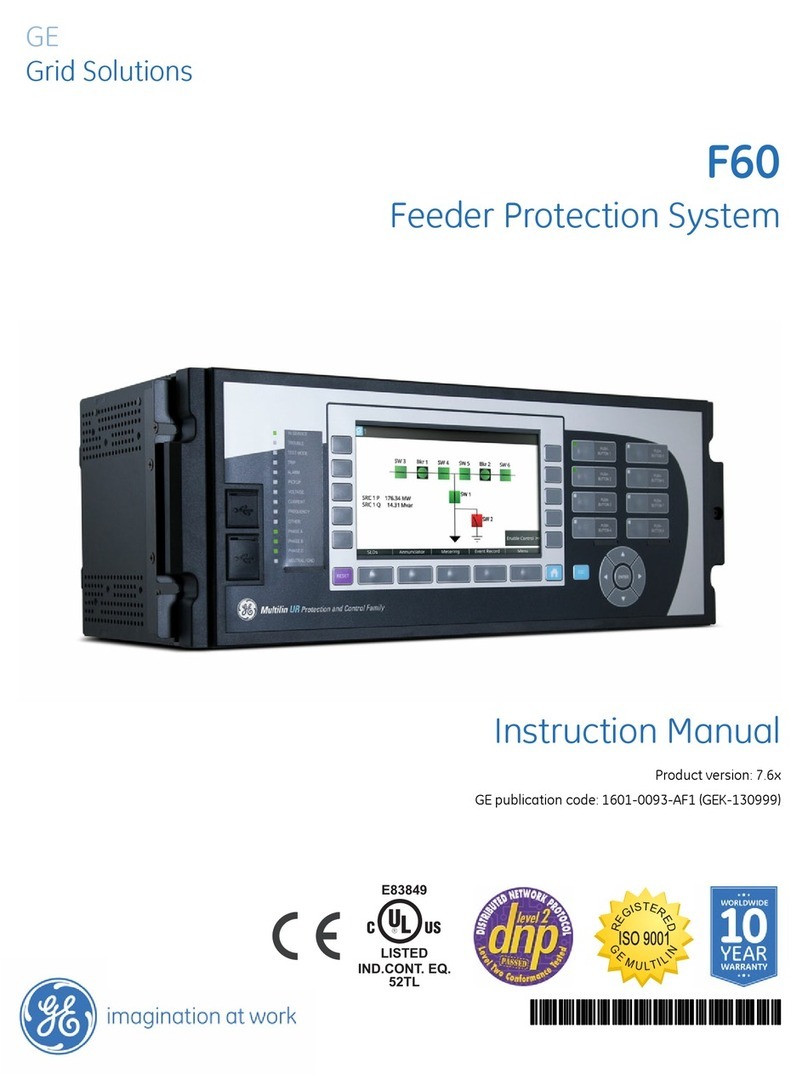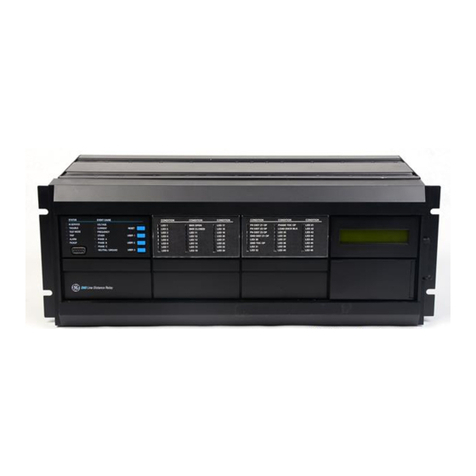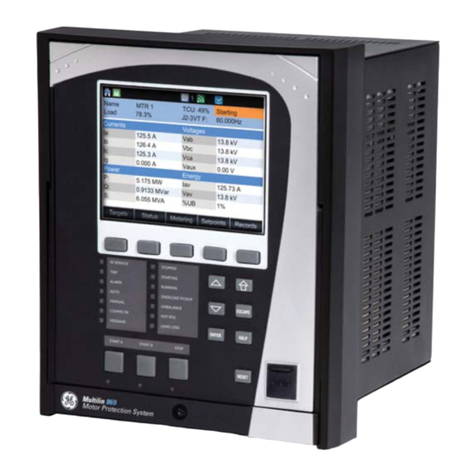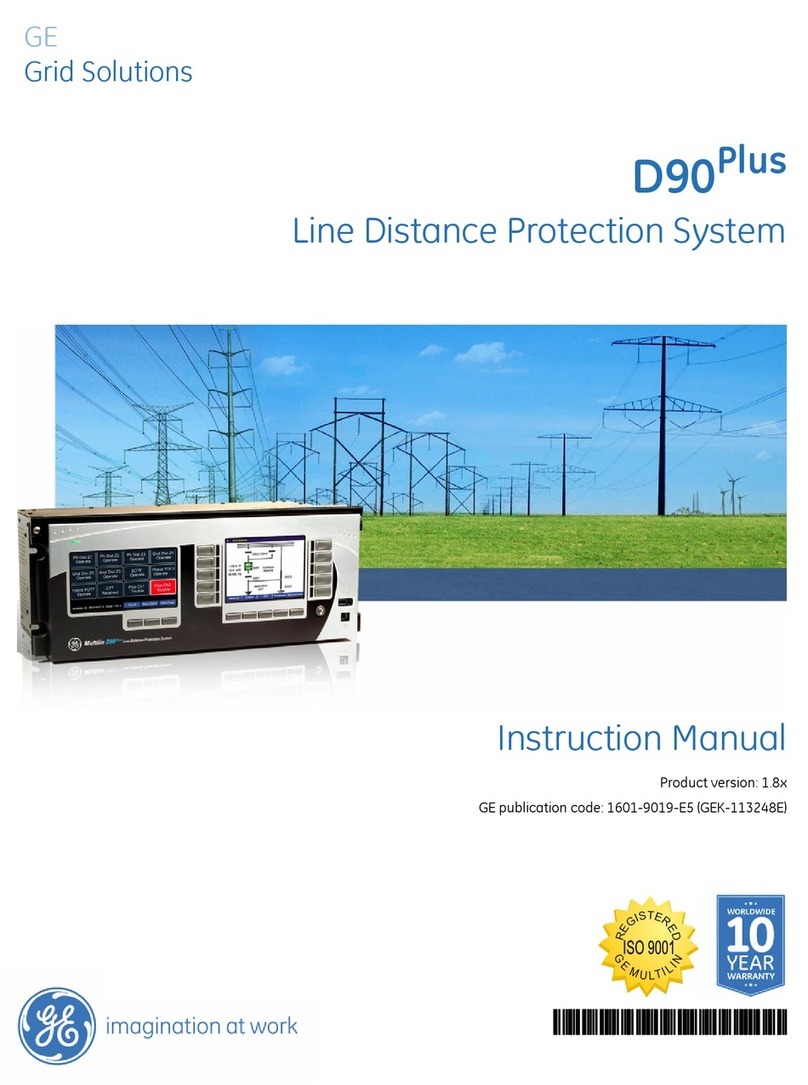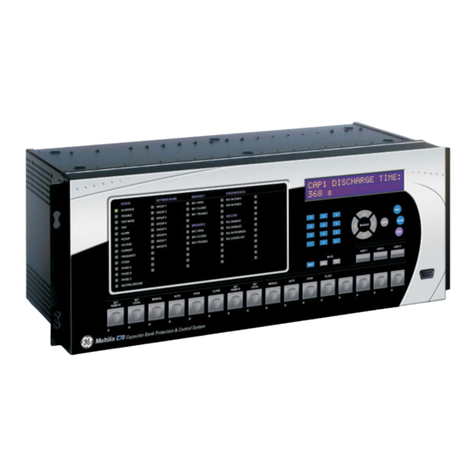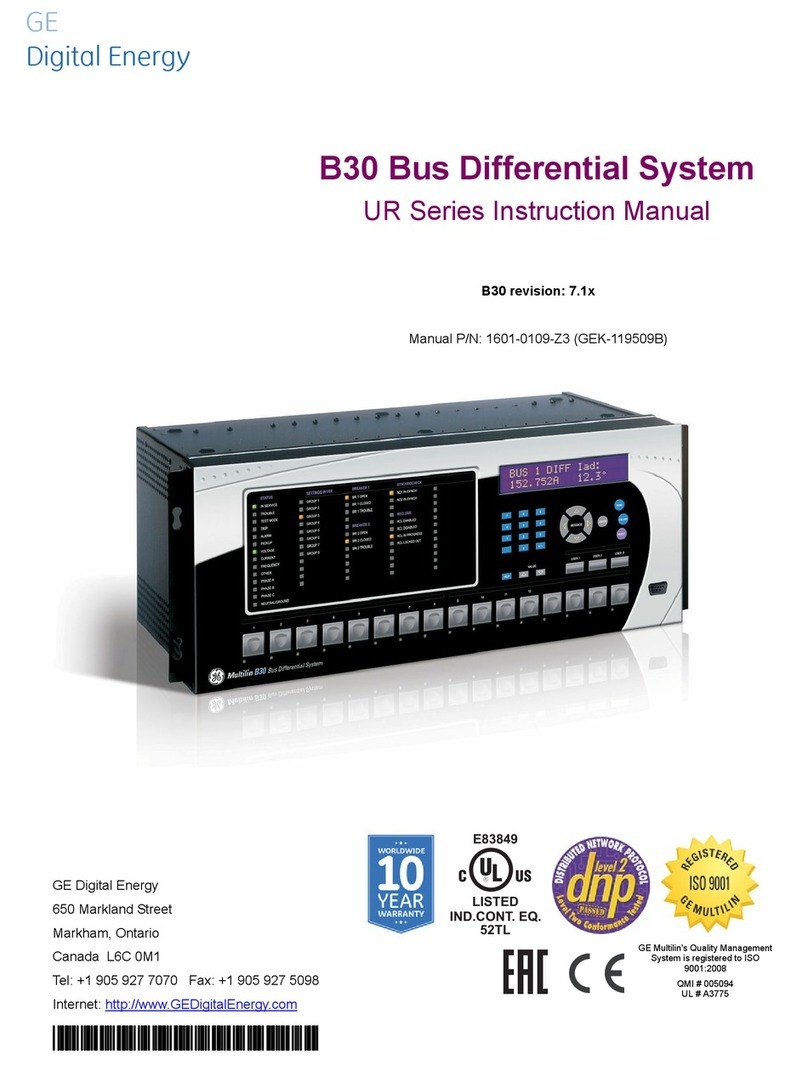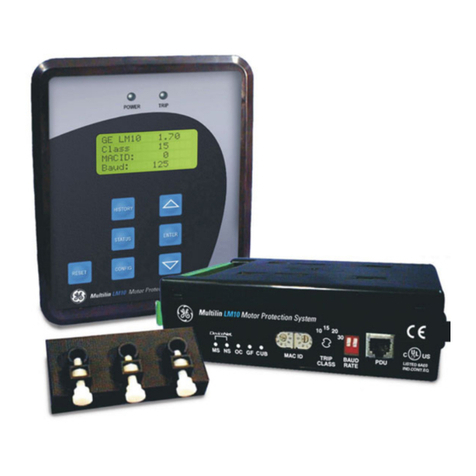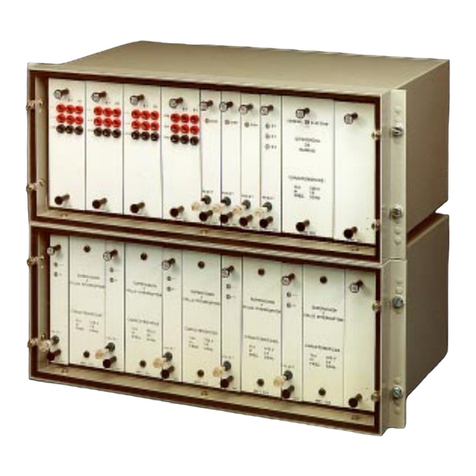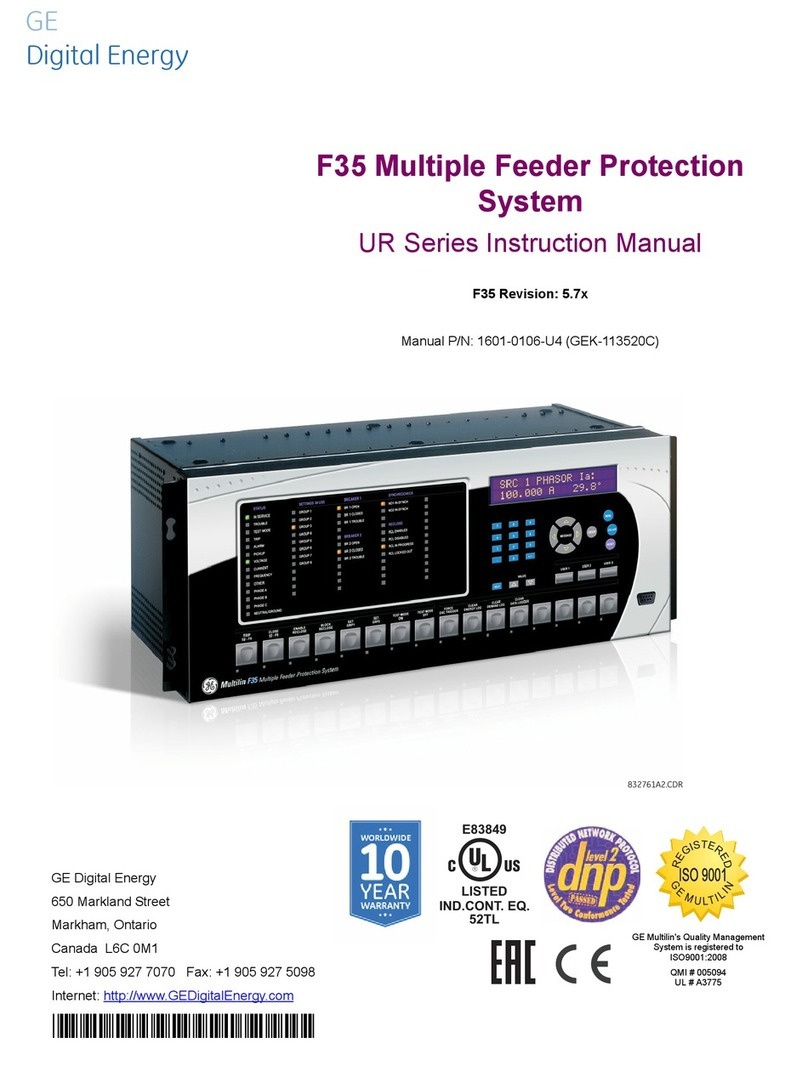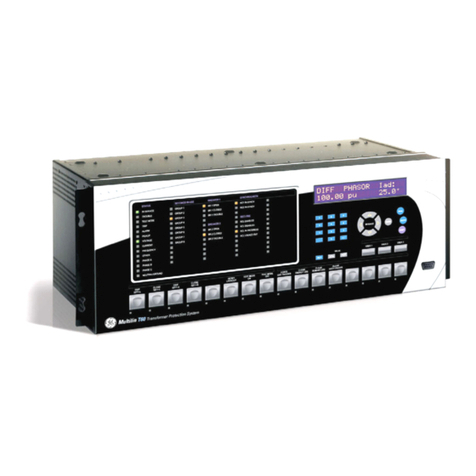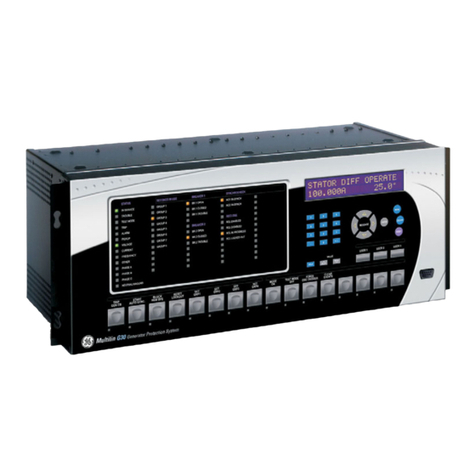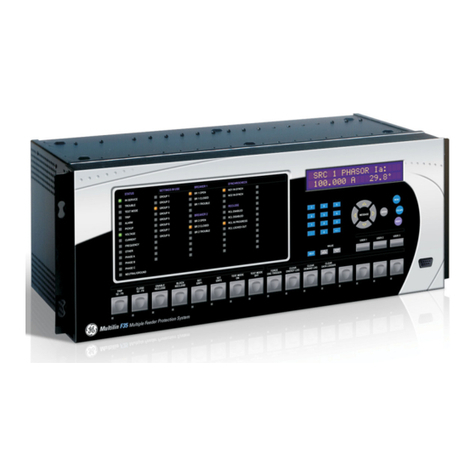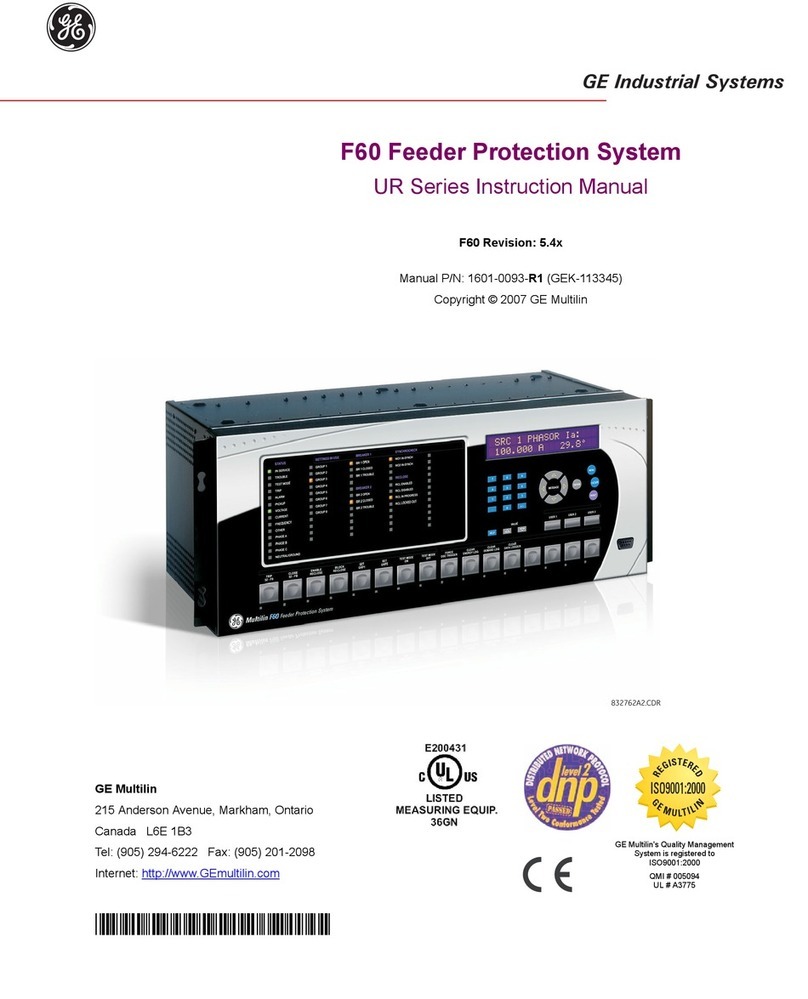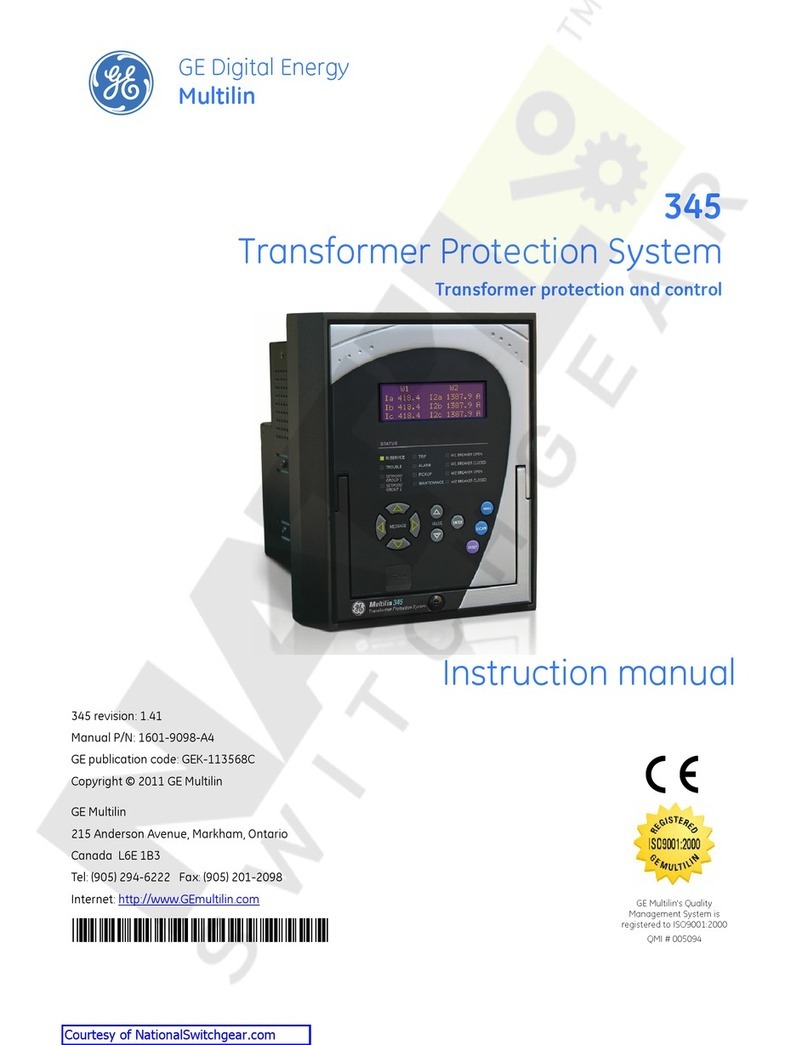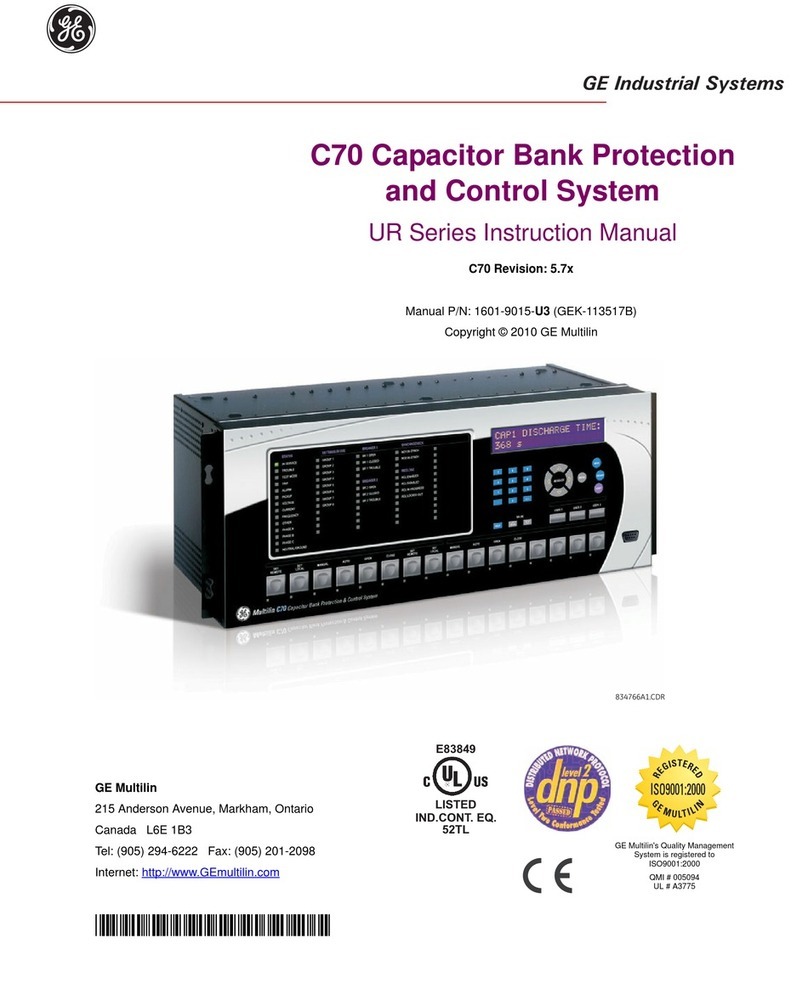
GE Multilin D60 Line Distance Protection System vii
TABLE OF CONTENTS
5.2.14 FLEX STATE PARAMETERS.......................................................................... 5-52
5.2.15 USER-DEFINABLE DISPLAYS ....................................................................... 5-53
5.2.16 DIRECT INPUTS AND OUTPUTS................................................................... 5-55
5.2.17 TELEPROTECTION......................................................................................... 5-63
5.2.18 INSTALLATION................................................................................................ 5-63
5.3 REMOTE RESOURCES
5.3.1 REMOTE RESOURCES CONFIGURATION ................................................... 5-65
5.4 SYSTEM SETUP
5.4.1 AC INPUTS ...................................................................................................... 5-66
5.4.2 POWER SYSTEM............................................................................................ 5-67
5.4.3 SIGNAL SOURCES ......................................................................................... 5-68
5.4.4 BREAKERS...................................................................................................... 5-71
5.4.5 DISCONNECT SWITCHES ............................................................................. 5-75
5.4.6 FLEXCURVES™ ............................................................................................. 5-78
5.4.7 PHASOR MEASUREMENT UNIT.................................................................... 5-85
5.5 FLEXLOGIC™
5.5.1 INTRODUCTION TO FLEXLOGIC™............................................................. 5-101
5.5.2 FLEXLOGIC™ RULES .................................................................................. 5-113
5.5.3 FLEXLOGIC™ EVALUATION........................................................................ 5-113
5.5.4 FLEXLOGIC™ EXAMPLE ............................................................................. 5-114
5.5.5 FLEXLOGIC™ EQUATION EDITOR ............................................................. 5-118
5.5.6 FLEXLOGIC™ TIMERS................................................................................. 5-118
5.5.7 FLEXELEMENTS™ ....................................................................................... 5-119
5.5.8 NON-VOLATILE LATCHES ........................................................................... 5-123
5.6 GROUPED ELEMENTS
5.6.1 OVERVIEW.................................................................................................... 5-124
5.6.2 SETTING GROUP ......................................................................................... 5-124
5.6.3 LINE PICKUP................................................................................................. 5-125
5.6.4 DISTANCE ..................................................................................................... 5-127
5.6.5 POWER SWING DETECT ............................................................................. 5-145
5.6.6 LOAD ENCROACHMENT.............................................................................. 5-154
5.6.7 PHASE CURRENT ........................................................................................ 5-156
5.6.8 NEUTRAL CURRENT.................................................................................... 5-167
5.6.9 WATTMETRIC GROUND FAULT .................................................................. 5-175
5.6.10 GROUND CURRENT..................................................................................... 5-178
5.6.11 NEGATIVE SEQUENCE CURRENT ............................................................. 5-180
5.6.12 BREAKER FAILURE ...................................................................................... 5-186
5.6.13 VOLTAGE ELEMENTS.................................................................................. 5-195
5.7 CONTROL ELEMENTS
5.7.1 OVERVIEW.................................................................................................... 5-206
5.7.2 TRIP BUS....................................................................................................... 5-206
5.7.3 SETTING GROUPS ....................................................................................... 5-208
5.7.4 SELECTOR SWITCH..................................................................................... 5-209
5.7.5 TRIP OUTPUT ............................................................................................... 5-215
5.7.6 SYNCHROCHECK......................................................................................... 5-221
5.7.7 AUTORECLOSE ............................................................................................ 5-225
5.7.8 DIGITAL ELEMENTS..................................................................................... 5-237
5.7.9 DIGITAL COUNTERS .................................................................................... 5-240
5.7.10 MONITORING ELEMENTS ........................................................................... 5-243
5.7.11 PILOT SCHEMES .......................................................................................... 5-254
5.8 INPUTS AND OUTPUTS
5.8.1 CONTACT INPUTS........................................................................................ 5-276
5.8.2 VIRTUAL INPUTS.......................................................................................... 5-278
5.8.3 CONTACT OUTPUTS.................................................................................... 5-279
5.8.4 VIRTUAL OUTPUTS...................................................................................... 5-281
5.8.5 REMOTE DEVICES ....................................................................................... 5-282
5.8.6 REMOTE INPUTS.......................................................................................... 5-283
5.8.7 REMOTE DOUBLE-POINT STATUS INPUTS .............................................. 5-284
5.8.8 REMOTE OUTPUTS...................................................................................... 5-284
5.8.9 RESETTING................................................................................................... 5-285
5.8.10 DIRECT INPUTS AND OUTPUTS................................................................. 5-286
5.8.11 TELEPROTECTION INPUTS AND OUTPUTS.............................................. 5-289
5.8.12 IEC 61850 GOOSE ANALOGS...................................................................... 5-291
5.8.13 IEC 61850 GOOSE INTEGERS..................................................................... 5-292






